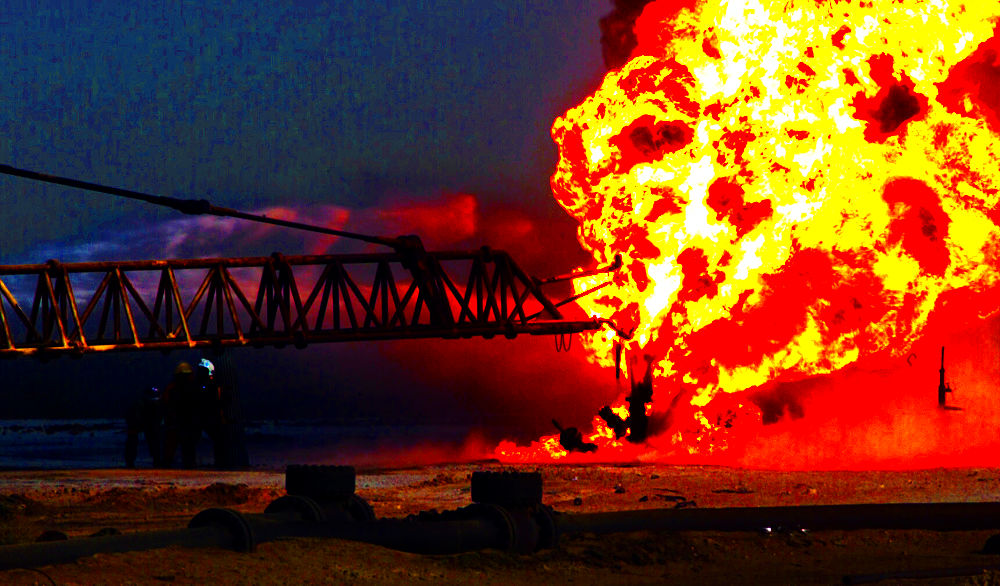
For years, analysts and traders have looked at their commodity charts much like an astrologer looks at the stars. They’re looking for some celestial signal that will bring them great wealth or protect them from impending doom. Analysts and astrologers alike look at their charts to find that “perfect pearl”; that one “exquisite bit of info” that signals the direction of their fortunes. Commodity markets, also known as futures markets, are markets that take seriously the signals generated by the trader’s charts.
Analyzing prices that are plotted on charts in the futures market is called “Technical Analysis”, and it has been with us for centuries. Since the nature of the futures market is cyclical, it allows history to repeat itself. In other words, price movement follows certain demand patterns that ebb and flow depending upon the time of year. While nothing is 100%, each and every tool that is available to use is employed to protect the fortunes of some of the world’s largest companies, many of which produce or support the production of crude oil.
Today, we’ll delve into the fast-paced and very valuable analytical tool, called technical analysis, used by crude oil traders around the world. Technical analysis is the method used to forecast the direction of prices by studying past market data. It uses price, volume and open-interest data to look for trends, and it breaks them down into several categories, mostly related to time. They look at hourly, daily, weekly, monthly, yearly, and life-of-contract charts to help define a market’s short- and long-term direction. They plot trends of varying lengths and use this data to establish or protect a position.
In today’s crude oil trade, we use technical analysis to chart a clear picture of where prices have traded over a particular period of time, and then make “educated assumptions” on where we think prices may head in the future based upon that data. All traders use charts to can gain an edge, or more importantly, keep a competitor from gaining an advantage over them.
Spotting Trends with Technical Analysis
As you might have already guessed, speculators tend to focus on the shorter-term trends, because their focus is of a more short-term nature. In other words, daily trend watchers tend to be speculators whose motives are for quicker, smaller gains and they accept higher risk. They move quickly in and out of a market. Those that look at the longer trends tend to be hedgers whose motives are to protect often large, open market and more long-term cash-based positions.
It’s interesting to see the trends for each of four major categories in chart analysis, as they are wildly different. Below are four charts for the June West Texas Intermediate (WTI) contract. Please note that these contracts expired on 5-22-2017, and are for demonstration purposes only.

(Charts Courtesy of: INO.com)
As you can see in the charts above, they are vastly different, showing significantly different directions. In the realm of commodity technical analysis, one must be laser-focused on one’s objective to be able to find the signals each chart offers. Let’s look at the “Life of Contract” June 2017 WTI chart above. At first glance you might think to yourself that prices have really fallen, but they look to be somewhat stabile for the last year. The yearly chart shows we’ve had some volatility, but we really haven’t seen any price appreciation over in a while.
In contrast, the Weekly June 2017 WTI chart looks somewhat bullish and may be signaling it’s time for the speculators to jump in and buy. We can actually see if this happens by watching the volume of contracts in the July WTI contract and the open interest in that contract as well. If both increase, the speculators have begun to move in and will help to push prices higher as well.
The Influence of Volume and Open Interest
Volume analysis in a market is a very valuable tool for the technical trader because it tells him or her how aggressive a move in a futures price has been. For instance, let’s say an average day in the June WTI contract sees 500,000 contracts executed per day. Last Thursday, one day after a big Bullish inventories report, the volume jumped to 750,000 contracts. This would be an indication that the Bulls have control of the market and are expecting prices to rise quickly. This is always a key indicator!
Open interest on the other hand, represents the number of contracts that are still open on the exchange. In the futures markets, each trade has two sides: an open and a close. In other words, I can call in a trade to buy one July WTI contract at, say $50.10, and when that price is accepted, I have one half of a round trade (the buy side at $50.10 still needs to be offset sometime in the future, but before the contract expires). The sell side that is still open or unexecuted represents open interest. When I execute a sell trade for the same one contract at, say $53.10, I complete the trade and close the overall position, removing one contract from open interest, and taking a $3.00 futures profit per barrel within my contract.

Bulls and Bears
The influences in the futures markets are typically characterized by two iconic symbols: the Bulls and the Bears. While they are both big and powerful animals, it’s easy to differentiate the two; “Bulls run markets up” and “Bears slap markets down”. Consequently, a Bullish Market is one in which prices are expected to rise and a Bearish Market is one in which prices are expected to fall.
These two characters, bulls and bears, have been associated with securities and commodities trades since the early 1700s and while there are many theories about how these markets got their names, all you need to remember is, Bull markets run up and Bear markets get slapped down. So, for the purposes of our technical analysis on the charts above, you can see we are experiencing a Bearish trend on the yearly chart, while the weekly chart is trending Bullish!
Speculators and Hedgers
Trading WTI crude oil in the futures markets hosts two primary types of traders: speculators and hedgers. There is another special category that is managed by the computers, called program, micro or logarithmic trading. This type of trade is so lightening fast that only a computer with a logarithmic program can execute trades fast enough to make profits. They might buy 1000 contracts of WTI at $51.255 at 12:01 am and sell them back at 12:02 am for $51.256 per barrel. The objective is to aggregate enough contracts that even a tiny uptick generates significant cash. As a former licensed commodity trader, we didn’t have computers to do this type of work back in the day and even today it takes a level of mathematical skill that few possess, so we’ll focus on speculators and hedgers for now.
Speculators are traders whose primary focus is capturing quick profits because they don’t have skin in the game. In other words, they don’t produce or make a business in the commodity they are trading. They analyze and forecast what they believe the futures price will be and they execute contracts with their own money at risk. Profits and losses are much more exaggerated with a speculative type of trade because speculators tend to only move into a market when they anticipate a major change in price movement. If they expect to see a short-term rise in the price of WTI crude oil, they would execute a long position to participate in the gain in the market.
Hedgers, on the other hand, actually have skin in the game. They either produce the commodity or they will need to purchase or sell the commodity, like WTI crude oil, in the future. They either buy or sell a contract of their product on the futures market to counterbalance a corresponding cash trade in the open market. In the futures markets, prices tend to diverge from the actual cash price in future months. In other words, since this is May, the June is higher than the May and the September is higher than the June. As time moves forward, toward the end of the contract, prices always converge to the same point at expiration. Don’t worry about the terminology right now, just understand the concept, futures and cash prices converge over time and become equal at expiration of the futures contract.
Hedging in Action
While this sounds kind of confusing, an example, using WTI crude oil might help you to understand better. Let’s say Sunset Hill Exploration Company, a fictitious exploration and production company, (E&P) produces 1,000 barrels of crude oil per month. Prices are a bit lower right now than they are toward the end of the year. They would like to lock in the higher prices that are trading a few months out. It’s May and they don’t have their expected production for the last quarter sold yet. Prices are much higher in the later months because it looks like OPEC will extend their production cuts. So Sunset Hill sells one contract per month each for October, November and December, at $53.10, locking in a $3 per barrel profit for those last three months from the current price. Then they sell their WTI crude oil at the time it is produced and apply the futures profits to any profits or loss they might incur in the cash market. Here’s the beauty of this situation, as explained below, prices converge between futures and cash at expiration. By locking in the $3 profit, the cash market can fall and all Sunset Hill has to do is buy the contract back at the new lower price; assuring the sale price of $53.10. Remember that price guarantees a $3 profit, no matter what the cash crude for crude oil is.
There is, however, one major drawback to hedging, and that is human nature. Hedgers sometimes get a little hopeful, desperate or just plain greedy, and they double their position to earn back some of another position’s loss or take a little more out of the market. When this happens, they quickly move from the category of hedger and become a speculator on the portion that is unmatched in the cash market. Remember what we said about speculators, they take on significantly greater risks than do hedgers, and losses can be staggering, even on a tiny little trade, if the markets take an unexpected turn.
In the futures markets, technical analysis is a very vital and necessary tool to help a speculator and a hedger engage a market. Understanding the nature of these markets is essential to understanding how crude oil prices trend.
By Tim Snyder
Read More from Crudefunders
If you want more information on the energy markets and what is making prices move every day, go to our website www.crudefunders.com and scroll down to where it says “Subscribe”. There you will find our link to the daily commentary “Energy Wise”, a comprehensive piece that includes both fundamental and technical analysis of the day’s energy markets and provides you with the detail that you need. For more on Energy Economist Tim Snyder and his company, go to www.matadoreconomics.com.
DISCLOSURE: The views and opinions expressed in this article are those of the authors, and do not represent the views of equities.com. Readers should not consider statements made by the author as formal recommendations and should consult their financial advisor before making any investment decisions. To read our full disclosure, please go to: http://www.equities.com/disclaimer








